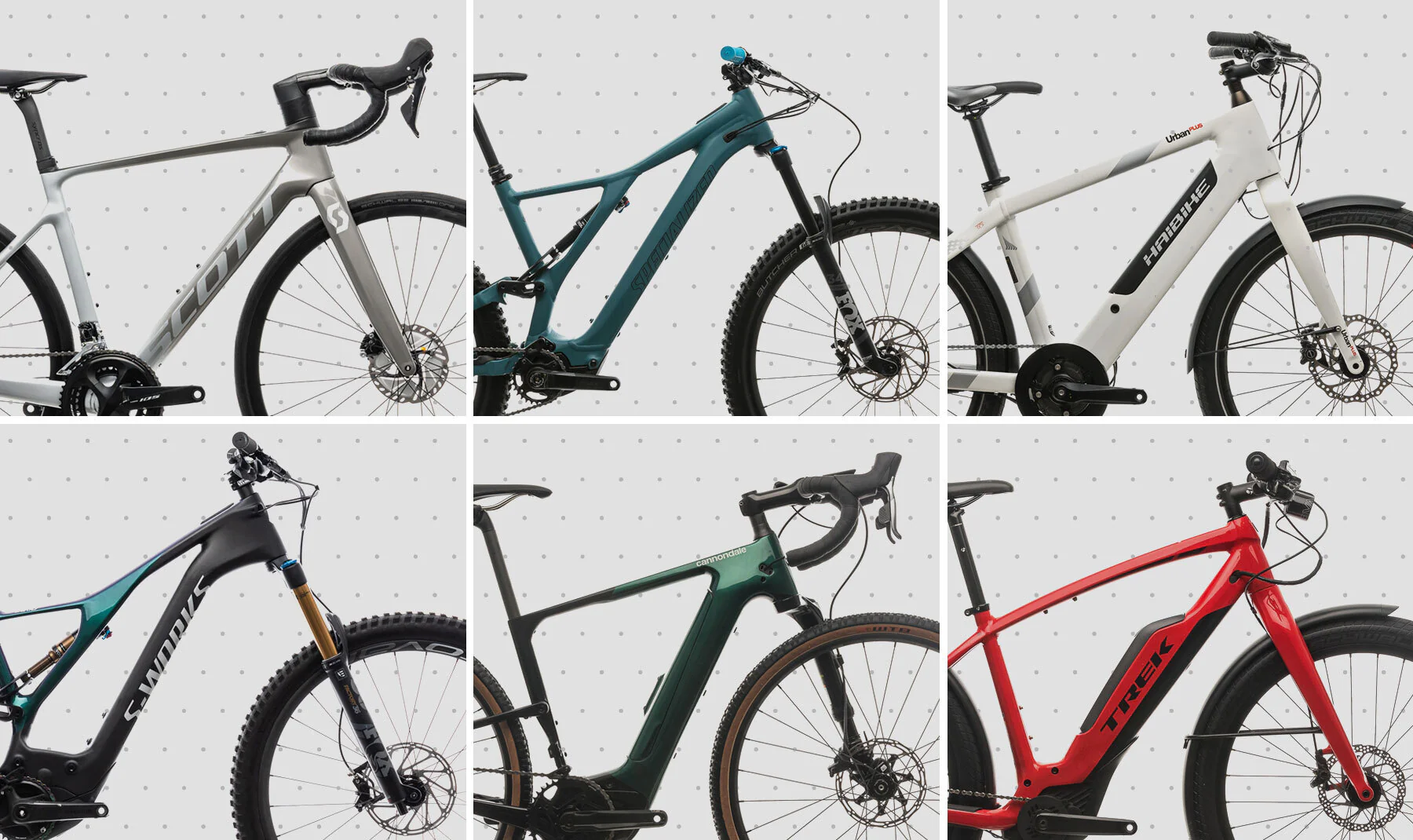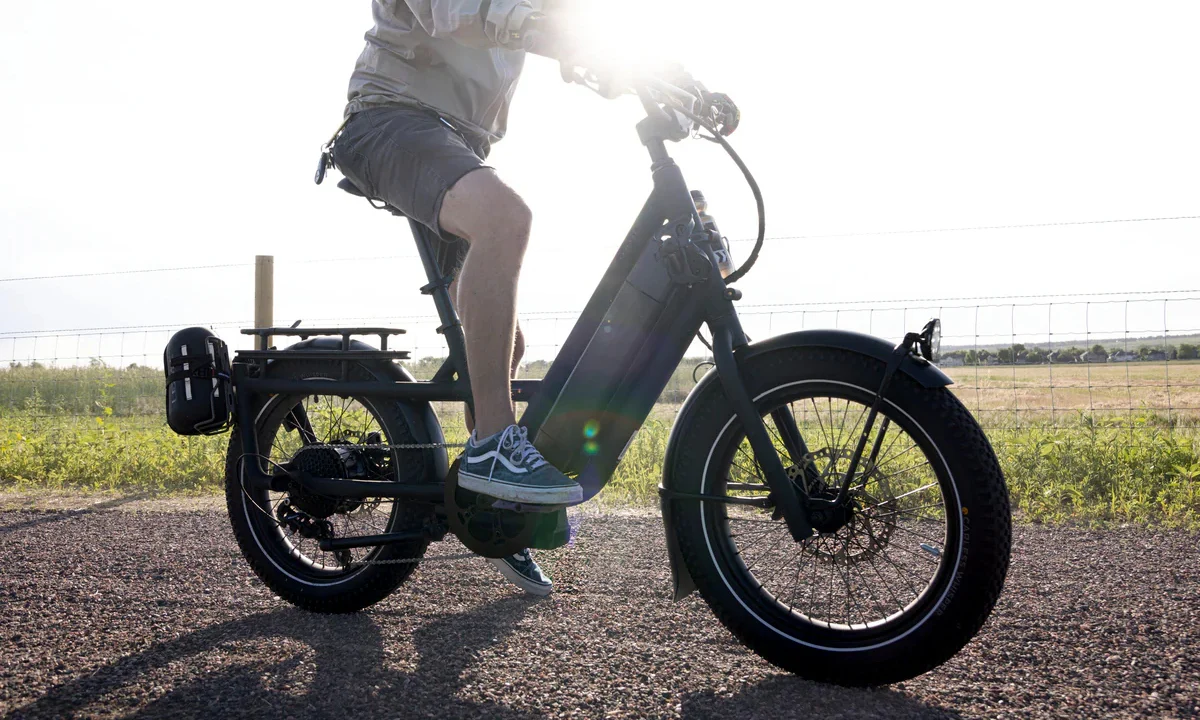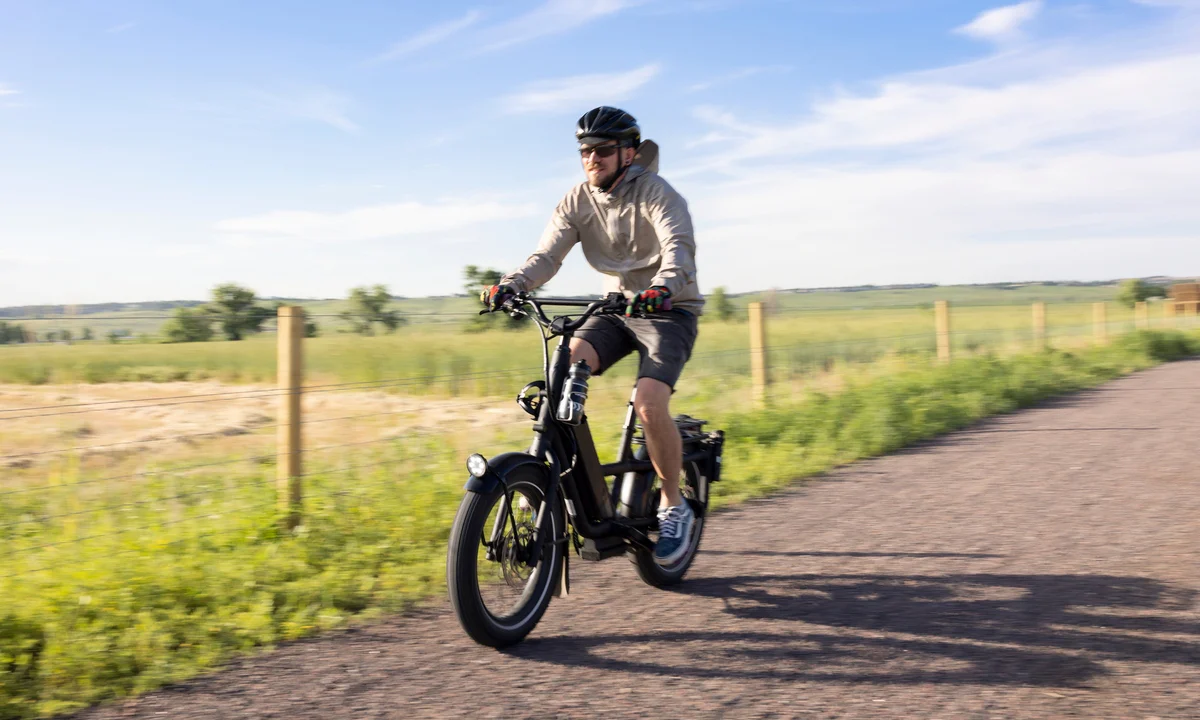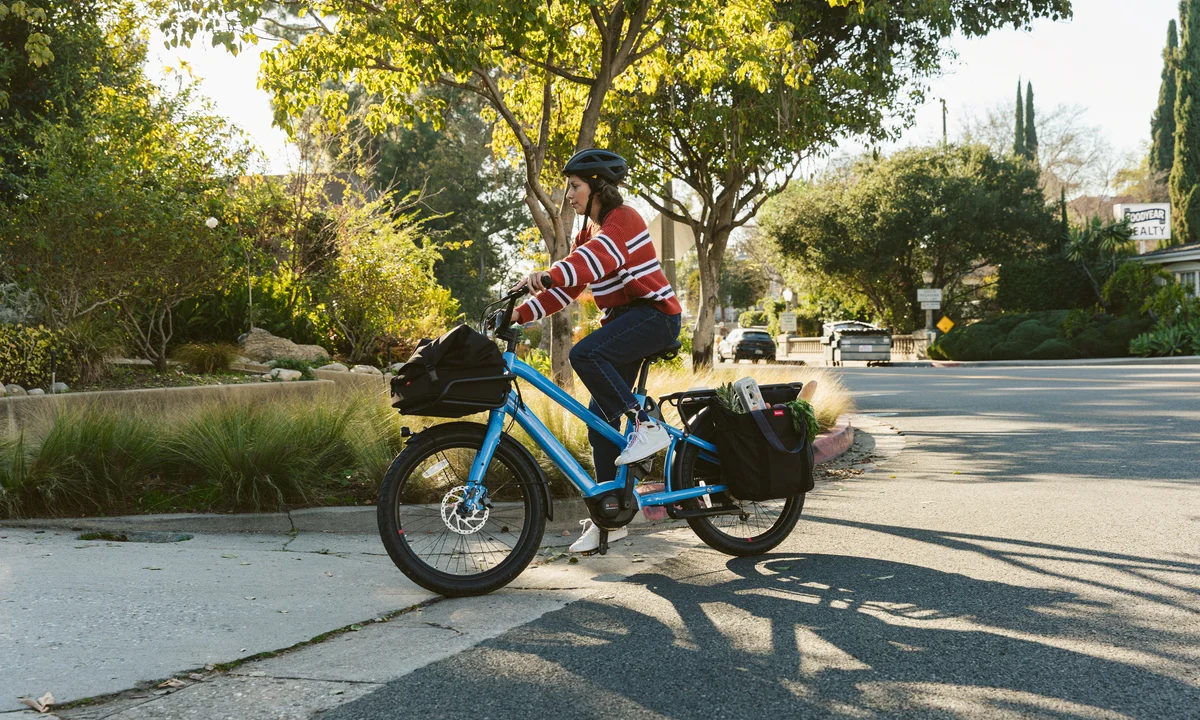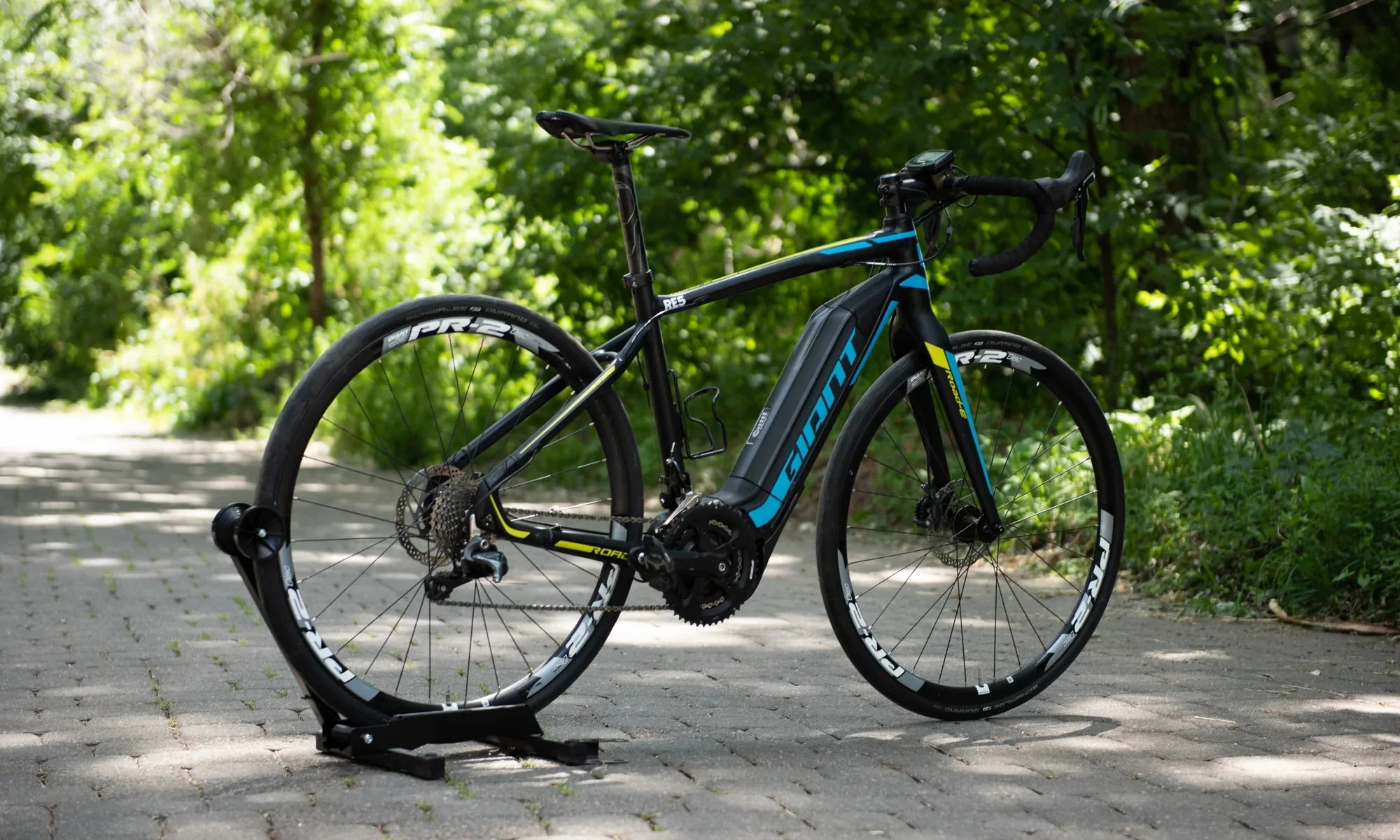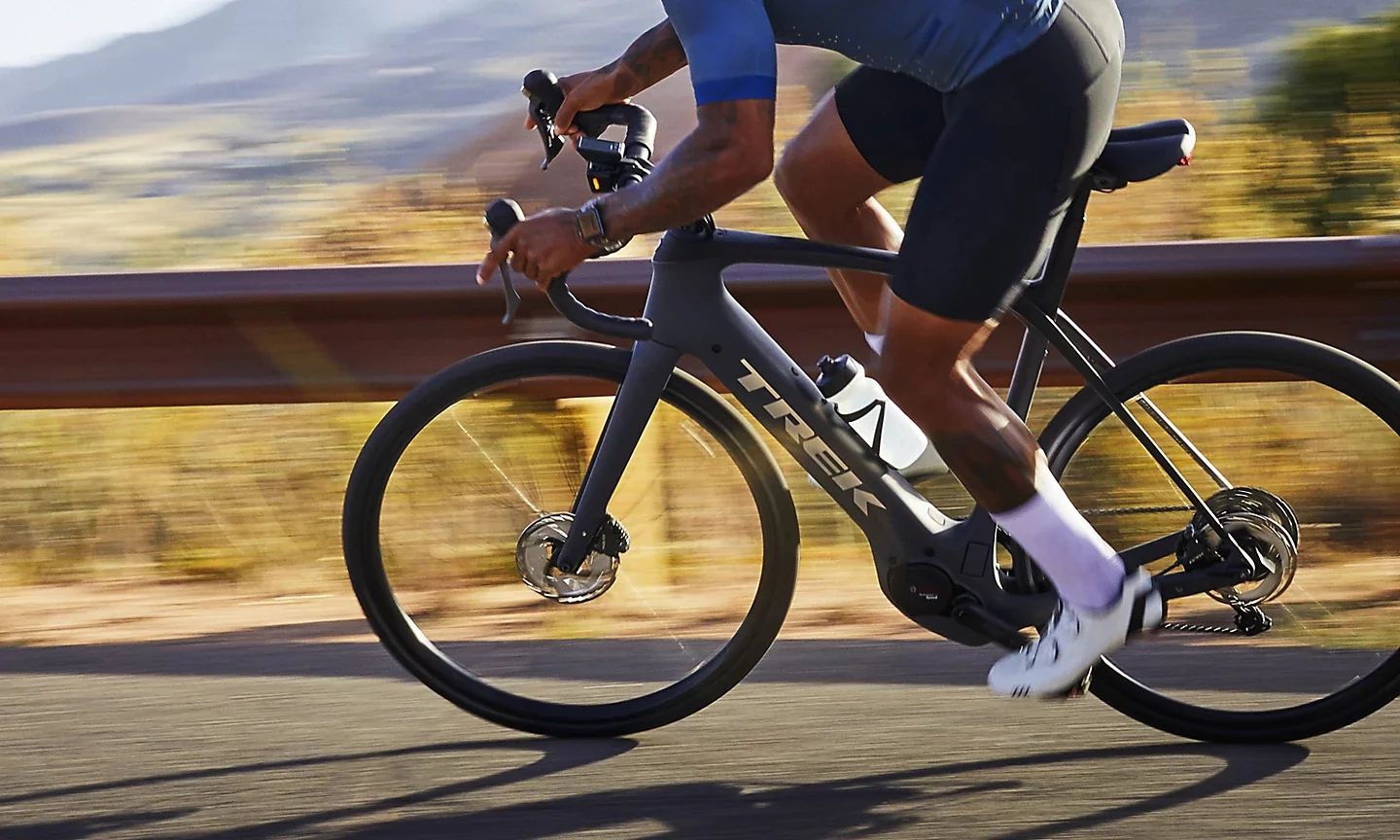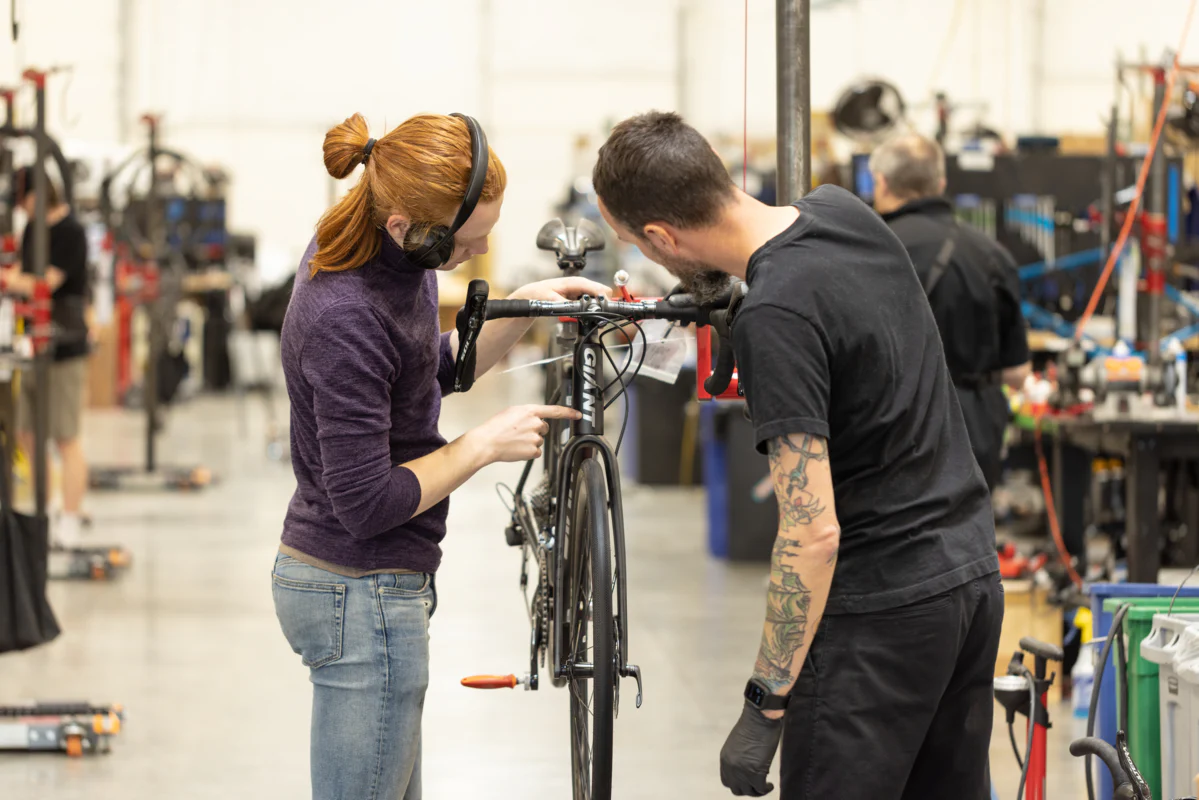What Is an E-Bike?
 An e-bike is a bicycle that uses an electric motor for propulsion. A huge range of bicycles fit that description, but a "pedal-assist" (also called a “pedelec’) e-bike is most common. The Pro’s Closet and most traditional bike shops carry and recommend this type of e-bike.
An e-bike is a bicycle that uses an electric motor for propulsion. A huge range of bicycles fit that description, but a "pedal-assist" (also called a “pedelec’) e-bike is most common. The Pro’s Closet and most traditional bike shops carry and recommend this type of e-bike.
How Do Electric Bikes Work?
Hub Motors
 For an e-bike equipped with a hub motor, the motor is either in the front or rear wheel – completely independent of the drivetrain. These motors are most common because they’re cheaper and require less maintenance than other motors.
For an e-bike equipped with a hub motor, the motor is either in the front or rear wheel – completely independent of the drivetrain. These motors are most common because they’re cheaper and require less maintenance than other motors.
Mid-Drive Motors
 Mid-drive motors are positioned in the bottom bracket, and they drive the crank. These motors are especially great for climbing steep inclines as they make the bike’s center of gravity low. They’re also usually lighter and smaller than hub motors, and thus more expensive.
Mid-drive motors are positioned in the bottom bracket, and they drive the crank. These motors are especially great for climbing steep inclines as they make the bike’s center of gravity low. They’re also usually lighter and smaller than hub motors, and thus more expensive.
Friction Motors
A friction-drive motor spins a roller that's pressed against a bike’s rear tire. These motors were popular at the beginning of the e-bike boom, but have been largely replaced by hub motors and mid-drive motors. Powering a wheel by rubbing on the tire isn’t a very efficient way to get a bike to move. Energy is lost as heat, and there’s quite a bit of tire wear.
What Are the Different Types of E-Bikes?
Road / Gravel
Road e-bikes are a sportier e-bike option. They use drop (curved) handlebars, narrower tires with smooth, slick, or minimal tread, and no suspension. This allows road e-bikes to feel quick and agile on paved road surfaces. Gravel e-bikes are geared more toward dirt and gravel roads with the addition of wider tires with more tread.
Ideal use: Riders looking for quick handling and a sporty feel for cruising, long-range exploration, and spirited rides.
Performance Road
Performance road e-bikes are nearly indistinguishable from traditional road bikes. Compared to other road e-bikes, the main difference you’ll notice is a more discrete battery and a motor located in the hub of the rear wheel rather than the center of the bike. These e-bikes are made to feel more like traditional road bikes and often weigh less than 30lbs. They can be easily pedaled without assistance from the motor and are designed to enhance the traditional riding experience by providing subtle assistance.
Ideal use: Road cyclists who want to blend in and just need a little extra boost to keep up with fast groups or accomplish their riding goals.
Commuter
This style of e-bike is geared toward comfort and practicality. It splits the difference between road and mountain e-bikes with road-oriented wheels and tires and flat handlebars. Commuter e-bikes may include accessories like racks for carrying luggage, lights for night riding, or fenders for wet weather. Some have suspension for added comfort and some come in a “step-through” design for easier mounting and dismounting.
Ideal use: Commuting, city transport, bike path cruising, casual and recreational riding.
Mountain
Mountain e-bikes have flat handlebars as well as knobby tires and suspension for handling rough off-road terrain. Mountain e-bikes can be ridden comfortably on the road and on gravel, but they are generally geared more toward singletrack trails. Mountain e-bikes can be either a hardtail or full-suspension design.
Trek Powerfly
Hardtails use a suspension fork in the front and are good for riders mixing bike paths, gravel, dirt roads, and smoother singletrack trails. Full-suspension e-bikes add suspension to the rear to improve comfort and traction on rough and technical terrain.
 Specialized S-Works Turbo Levo
Specialized S-Works Turbo Levo
Full-suspension mountain e-bikes at The Pro’s Closet can be filtered into three categories based on the amount of suspension travel: 111-130mm rear travel, 131-150mm rear travel, and 151-170mm rear travel.
Shorter travel bikes (110-130mm) will feel more agile and playful, especially on smooth and flowy trails, while longer travel bikes (151-170mm) will feel more planted and capable on rough downhill trails. Bikes in the mid-travel range (131-150mm) try to split the difference.
Travel should be matched to your terrain and riding style. In general, the rougher, steeper, and more technical your trails are, the more travel you will want.
Ideal use: Rough roads and singletrack mountain bike trails.
What Are E-Bike Classes?
Class 1: Pedal-assist only. The motor provides assistance only when you pedal, and stops helping at 20mph.
Class 2: Has a pedal-assist mode that assists up to 20 mph and also a purely throttle-powered mode.
Class 3: Pedal-assist only (like Class 1), but the motor provides assistance until you hit 28mph.
Class 1
Class 1 e-bikes are the best choice for the majority of riders. They are the most common and, from a regulatory standpoint, the most universally accepted. You can ride a Class 1 e-bike on city streets and many bike paths. Access to mountain bike trails varies around the U.S., but Class 1 e-mountain bikes are the only type allowed in most areas.
Class 2
Similar to mopeds or scooters, class 2 e-bikes have an option for the motor to be controlled by a throttle. When the throttle is engaged it propels the bike forward, without additional pedaling needed. Class 2 e-bikes are the only class with a throttle option. The Pro’s Closet and most bike shops only sell Class 1 and Class 3 e-bikes.
Class 3
Class 3 e-bikes are faster and more powerful. This is good for riders who need to keep up with car traffic, ride with heavier loads, or just have a need for more speed. Class 3 e-bikes are the fastest pedal-assist e-bikes that don't fall into the motorcycle/moped/scooter category. Depending on your state, these may not be legal to ride on bike paths.
What’s the Difference Between Pedal Assist and Throttle?
Throttle equipped e-bikes have a motor that engages when a rider twists a grip or presses a button. Once engaged, the motor provides power. All other e-bikes rely on pedaling to engage the motor. Pedal assist e-bikes are more like regular bikes, while throttle e-bikes are more like mopeds or scooters.
Can You Use an E-Bike as a Normal Bike?
Absolutely! Anyone can enjoy the benefits of assisted pedaling. Here are some ways that people can enjoy e-bikes just like normal bikes:
- Enjoying the outdoors and getting exercise without the effort of pedaling a traditional bicycle.
- Riding with a faster partner, an e-bike can give a boost to help keep up.
- For those who lack the time or fitness to accomplish the rides they’re interested in doing.
- Commuting on a long or difficult route — or generally, if you want to ride somewhere but not get as sweaty.
- Parents carrying children to and from school or errands, and those hauling groceries or heavy supplies.
- Anyone who wants to add another bike to their current quiver as an all-around tool for transportation and fun.
How Is an E-Bike Different from a Normal Bike?
Riding Experience
Depending how much boost you’re using, pedaling an e-bike is very much the same experience as pedaling a traditional bike. Some who have ridden regular bikes, and then try an e-bike, describe the assistance like a nice tailwind. Something that might normally take all of your energy, now only takes about half.
Weight
E-bikes are much heavier than traditional bicycles due to the battery, motor, and reinforced frame. Most weigh between 40 to 59lbs. Some high-performance road e-bikes will be just below 30lbs but these have smaller batteries and provide less pedal-assist. For ease of comparison, The Pro’s Closet lists the actual weight of each bike in the specifications.
Modern e-bikes handle well despite their weight, and of course, the electric motor makes the extra pounds disappear once you start pedaling. But keep weight in mind if you need to lift or transport your e-bike regularly.
Range
 Charging a Bosch equipped e-bike. Photo courtesy of Trek Bikes.
Charging a Bosch equipped e-bike. Photo courtesy of Trek Bikes.
Do you ever feel like your whole life is charging devices? Well, e-bikes give you yet another battery to charge. Battery capacity is measured in watt-hours (wh), the number of hours a battery can sustain one watt of power before dying. Motor power affects your battery life so a 500w motor paired with a 500wh battery drains power more quickly than a 250w motor with the same battery. 500wh is the most common battery size for most types of e-bikes. High-performance road e-bikes often use smaller 250wh batteries to reduce weight.
There are a lot of variables that affect range, but for e-bikes with standard 500wh batteries, you can expect your battery to last anywhere from 35 to 100 miles before recharging. The range will depend on how you ride and the power modes you use. Obviously, if you stay in low/eco mode the battery will last longer, and if you zip around on high or “turbo” all day, you’ll run out of juice faster.
Most batteries are easy to remove and will require three to five hours to fully charge from empty. If you use your e-bike heavily or do extreme long-distance rides, you can buy extra batteries or chargers.
Cost
Like all bikes, there’s a huge price range depending on all kinds of features. You’ll want to consider the style of the bike, the weight, motor, and battery. Generally, you can expect to pay between $2,000 and $8,000.
Regulations
 Riding e-bike legal mountain bike trails. Photo courtesy of Orbea.
Riding e-bike legal mountain bike trails. Photo courtesy of Orbea.
Know the rules in your area — pay attention to trail and bike path signage to know where e-bikes are and are not allowed. Though e-bikes are becoming more widely accepted, it’s still very important to know where you can and cannot go with a motor.
Recent new ruling that applies to the Bureau of Land Management, National Park Service, Fish and Wildlife Service and Bureau of Reclamation say that:
- Electric bicycles are no longer defined as motor vehicles or off-road vehicles, but are properly defined within three classes.
- Electric bicycle riders have similar rights, privileges and duties as traditional bicycle riders.
- Local land managers can authorize some or all classes of electric bicycles on roads, paths and trails where bicycles are allowed.
- Local land managers maintain significant control, in partnership with the public, to make access decisions.
FAQs and links to the individual agency regulations are posted on People for Bikes' electric bicycle webpage. As always, check your local laws and with local landowners before riding.
Conclusion
 Finding freedom on an e-bike. Photo courtesy of Trek Bikes.
Finding freedom on an e-bike. Photo courtesy of Trek Bikes.
For almost everyone, a Class 1 e-bike is the way to go. But, you’ll still need to decide what style bike you’re interested in, and what features you need. Whether you’re using the boost to run errands and leave the car behind, or to tackle steep trails that you’ve never been able to try before, e-bikes are allowing more and more people to get on two wheels and enjoy the outdoors.
In many ways, riding an e-bike is just like riding a traditional bicycle. Always follow the rules of the road the same way you would on any bike. Be courteous, and share the road or trail. Good e-bike etiquette includes not using high/turbo power modes on multi-use paths with pedestrians and other cyclists. Consider mounting a bell to warn other trail users of your presence. E-bikes are heavier and less agile in emergency situations. Don’t go too fast, pass dangerously, or follow others too closely, and ensure you have enough room to stop and avoid obstacles.


